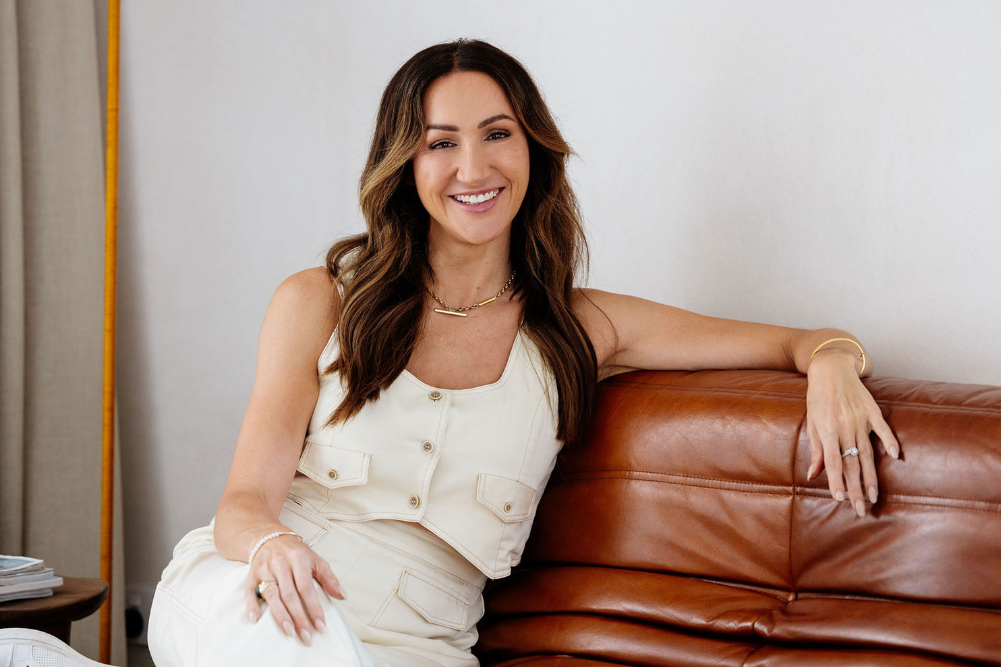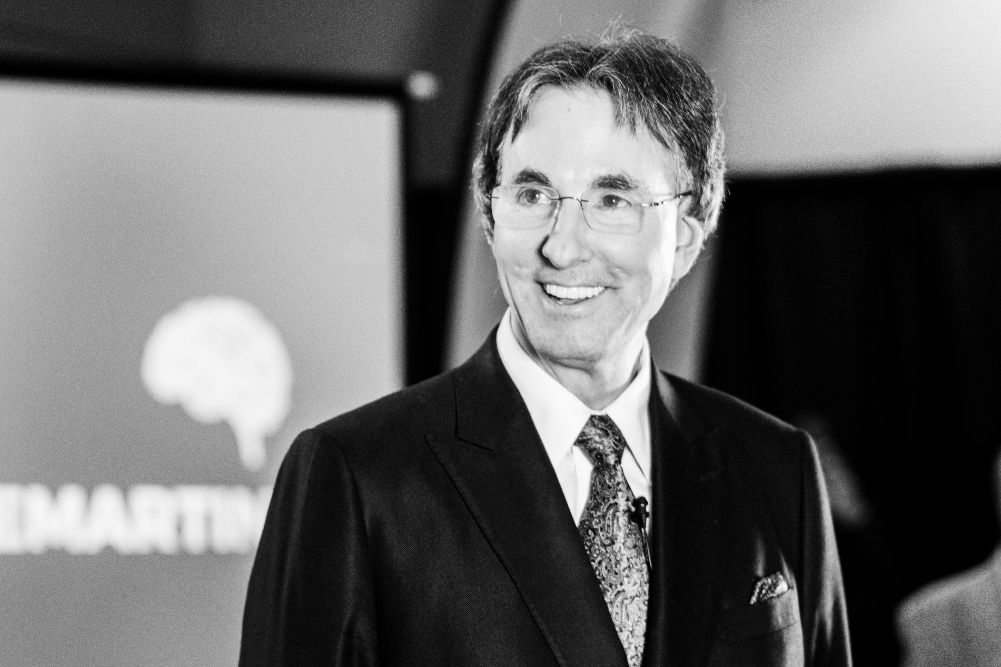Costa Georgiadis: postcards from the hedge
I first met Costa Georgiadis when he and I were scheduled to be speaking at the same conference. I’d seen him on his television program Costa’s Garden Odyssey on SBS Television and I found myself wondering whether the passion he displayed on-screen would be genuine or a confection for TV. After half an hour of watching as he spoke, a plate of soil in hand, with absolute passion and belief that held the audience spellbound, I knew this guy was the real deal. He is no mere gardener, if gardening could ever be considered a “mere” activity, but is a man of an intense and far-reaching vision for what society can be, the challenges we face in getting there and how we can overcome them.
Village values
As his surname may tell you, Costa has a Greek heritage and it’s this background that provided the soil in which his interest in sustainable living grew. “I grew up spending time in those really kooky backyards — those mad, ethnic Greek backyards that had fruit trees and figs, macadamias and strawberries in old tins,” he says. “They employed companion planting probably before the term even existed. They did all of that edible, sustainable gardening that just wasn’t defined like that at the time.
“My grandfather was the key driver and I was into it because he was so into it. That was his life, he was a gardener and he gained such pride and joy out of sharing,” recalls Costa. “For all the joy people derive today from social media, he derived joy from sharing boxes and bags of produce with the family and the neighbourhood. He was a community gardener ahead of his time. His community was the family, the extended family, the immediate neighbours and anyone else he had contact with, from people delivering things to the house to passers-by.”
According to Costa there was a pragmatic base to this ideal-sounding existence. “It was sustainable,” he observes, “because they had to make it sustainable; there was an economy about the way they did things. There wasn’t the excess, there wasn’t the largesse and there was none of the attitude that we can do whatever we like for as long as we like. The convenience mentality was just not part of their paradigm. They did it because every last bean, strawberry or piece of produce was respected for where it had come from and how it had been nurtured. Rubbish was not a part of their lexicon.”
The roots of this approach lie in what the Greeks call the χÏŽρÏŠÏŒ (pronounced chorio — the village). Costa believes, “Everything about conservation and sustainability, the titles we give it today, is all about the village way of thinking. This is not in any backward sense but in a progressive sense because they did in many ways have it sorted and understood the cycle of things. There was no attitude of “go out and buy, consume and then dispose”. Everything came into the system and then largely remained in the system; it got broken down, went back into the soil and then came back around as your next meal.”
Screen time
Fortified with the attitudes embodied by his grandfather, Costa later studied landscape architecture at the University of New South Wales. He describes landscape architecture as being “… all about understanding the very fabric of the landscape we live in and to be able to work with those natural functions, be it the hydrology, the interaction between geography and climate or an understanding of the vegetation and the soils. It seeks to understand how all these systems intersect and uses that understanding to design and interact with human settlements and how they fit in the landscape.”
You get the feeling talking to him that Costa’s is an ever-expanding, ever-enquiring energy. There is no sense of boundaries for this man and, even while studying for his degree, Costa’s thirst for knowledge was unsatisfied. Outside of university he also studied permaculture, catchment management, aquaculture and more. It was all building a foundation for the work he now undertakes across media, public speaking, and school engagements, though he didn’t know it at the time. In fact, the move into television came a little by surprise.
Costa reflects on the first thoughts that television might be a path for him. “That urge awoke with my good friend Sean [Kennedy]. He was making documentaries and there were times when we would sit there and watch a show and think ‘Gee, we should have a crack at doing something like that one day.’” At the time, though, Sean was busy with documentary making and Costa was indulging his love of travel. At one point, Costa lived in Austria, building rooftop gardens and eco ponds. So Costa and Sean were too busy to make anything of their ideas about producing a television program … until there was a phone call.
“There was a phone call from a production company,” recalls Costa. “They were looking for someone to host a lifestyle show. Together with that production company, Freehand, and then with SBS who backed me when none of the other stations would back a half man/half hedge, we made Costa’s Garden Odyssey. I’ve got a lot of appreciation and respect for the fact that they did that. It’s been a wonderful opportunity and I want to pay that back in the sense of using this as a wonderful vehicle to show people what can be done and how much good stuff is being done by lots of people around the place.”
So began the journey that now sees Costa as host of the ABC television program, Gardening Australia, and using his profile and position to repay the opportunities he has been given by being an agent of change.
The disposable society
Costa burns with a passion for sharing the message that a disposable society is not a sustainable society. He drives home this point by linking it to individual health. “The myth that we can continue to live as a disposable society starts to fall apart at the seams when you bring it down to context of individual health. It is self-interest of the highest order. Your body is a sanctuary and what will you allow into your sanctuary? In the embrace of convenience we have transferred the responsibility for our individual health to others.”
Costa is aware, though, that the message is out there now and that it is time to go from the message of living sustainably to the method of living sustainably. He observes, “People want to learn about what the villagers knew in order to spread nature’s abundance across the year. You take your pumpkin supply and you work out how to keep it. How do you build an earth-rammed or earth-buried cellar to hold them and store them at a nice mean temperature? How do you take all those green tomatoes and make a relish? All those old-school preserving, not preservative, methods are where I am seeing that interest in method.”
It is at this point where his message is strongest. “These are methods of truth, simplicity and of the ages. They are methods that don’t require reinvention — they just require a letting-go of the need to continually innovate. There is incredible comfort in the knowledge that you can do something because it has been refined by generations and sometimes it is nice just to do something in a way because that is how it is done. That’s how culture defines itself — ‘That’s just how we do it.’ It takes away the need for this constant upgrade, version 7, version 7.1, version 7.1.1 … that’s an industrial, consumer notion.”
Much of what Costa advocates is simple, not naïve or unsophisticated, but simple in that it is the fundamental stuff of life and you can embrace the changes he advocates with equal simplicity and power. “The starting point for getting involved in this,” he says, “is when you open your mouth to eat. You don’t need a special fashion outfit, you don’t need to sign up, you can begin an incredibly radical impact of international change by thinking about what you put into your mouth. By accounting and being accountable for what goes into your mouth and where it has come from. When you start to put that as a priority, you start to change the way you look at the world. When you change the way you look at the world, you actually change the world.”
Soil and green
I mentioned that the first time I met Costa he was carrying a plate of soil. While I’ve since learned that this is not a permanent fashion statement, I do know he places a high priority on this often overlooked substance. According to Costa, “Soil is the most underrated living matter on the planet. We walk over it, we compact it, we build all over it but we don’t understand that it is the living, breathing planet. The importance of micro-organisms and hyphae and fungi and the subterranean matrix of interconnectedness that exists within the soil is where we live and die.
“The soil is the very living, beating heart of the skin that makes this planet liveable. Other planets don’t have soil … they’ve got dust, they’ve got sand, they’ve got rocks but they don’t have a living soil. It stands to reason that we need to support a living soil in order to grow living produce to sustain our own living.”
Making the change
Costa spends a lot of time and energy offering people practical steps and a methodology for making change in the world. He has made his television work a part of that and he also spends a lot of time in schools and working with community groups. Although he tailors his delivery to his audience, his passion for the topic is always present and the methods he advocates are essentially the same whether you are a child or an adult.
“The first and simplest thing is to open up your waste receptacle and start to see it as a resource receptacle,” he says. “Remove anything living or that has lived — any form of organic matter — so that it does not go to landfill and take that food and begin the process of putting life back into it. The most powerful definition that I have of compost is that composting is the only activity that we can undertake as humans where we turn death into life.
“If we think about every piece of scrap food, about every piece of left-over organic matter that we can find as a resource for life, a resource for building and supporting soil, then suddenly we look at everything in a different light. Ask yourself, is this something I can turn back into life or is it something that is inert that needs to be recycled or reprocessed? Just that action of looking into the garbage and beginning to separate things will start to connect you to the process of breakdown to build up again.
“We need death for life,” he says, “and if we recognise that composting and worm farming are necessary for that process of turning death into life, then we suddenly have the tools to build soil and building soil we have the tools to build our own fertility.”
The question then becomes, if you are living on a standard 450-square-metre block, how far can you go in living self-sufficiently and sustainably in terms of your food? Costa’s answer is, “The 450-square-metre block can be a research playground where you dabble but in the process of growing even just your salad greens you raise the bar so high that you then explore outside of your backyard. You then track down your farmers, you track down your suppliers at your local growers’ market and you connect with them and you buy from them, and you are now consuming food that you know the provenance of.
“You’ve shifted the goalposts. You have disengaged from a system based on the industrial food chain and said, ‘No! I want to know what’s going into my body.’ You know and you search and you take the time … not to drive around a supermall to collect your food, but to actually get to know who grows it and support the growers’ market or, if you want to start a little bit slower, get involved in a box system where someone else does the running around for you initially.”
So we have come back to where we started with participation in a village-like community being central to a return to personal and social wellbeing, and at the centre of that village is food.
Eating the future
According to Costa, “Food is the centre of community building. Look at all the great cultures and what punctuates their calendar is the food harvests. Now we have this ludicrous situation where we are eating this processed food that has such little nutrient density that you need to eat probably three times the amount that you needed to back in the 60s and 70s. So you have people physically eating more food but they are not getting nourished. Because they are not getting the minerals and are not getting nourished, they need to keep their energy up, so what do they do? They go for sugary drinks, they go for big metre-square muffins and sugar-coated chocolate brownies. We have an obesity epidemic because people are physically starving and they are going for sugary food that is dumbing them down. Get people onto foods that will actually feed them and you’ll change the world.”
You can see Costa on Gardening Australia at 6.30pm on ABC1 on Saturday nights. If you miss that, don’t worry. The passionate man-hedge will probably be spreading his enthusiastic vision of a sustainable future in a school or community forum near you very soon.
Costa is co-editor of WellBeing Organic Garden Project, which goes on sale on May 22, 2013.
Terry Robson is editor of WellBeing magazine. He is a journalist, author and broadcaster. His latest book Failure IS an Option is available through ABC Books.







